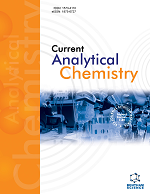
Full text loading...
We use cookies to track usage and preferences.I Understand
Biochar has garnered considerable attention in recent times due to its potential uses in the environmental field. In this study, we comprehensively examine and condense information on biochar production, characteristics, and adsorption mechanisms, with a focus on its economic applications for remediating hazardous contaminants. Our assessment is based on over 200 publications from the past decade. Biochar, a carbon-rich material, can be derived from various organic waste sources, such as food waste and urban sewage sludge. Researchers are particularly interested in biochar due to its high carbon content, cation exchange capacity, substantial specific surface area, and stable structure. We investigate how the physical and chemical properties of biochar may vary based on the feedstock used, providing a comprehensive overview of biochar and its composition for pollution remediation. The review also discusses common techniques such as gasification, hydrothermal carbonization, and pyrolysis used to produce biochar. We analyze current research on the mechanisms involved in pollutant treatment using biochar and its composites while also addressing future directions in biochar research.

Article metrics loading...

Full text loading...
References


Data & Media loading...

